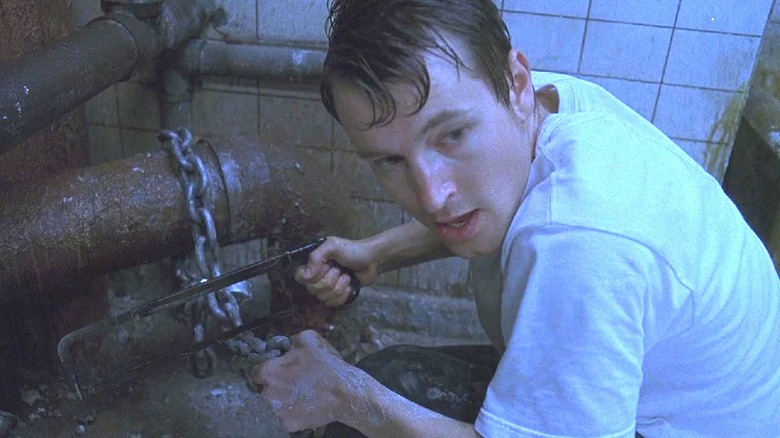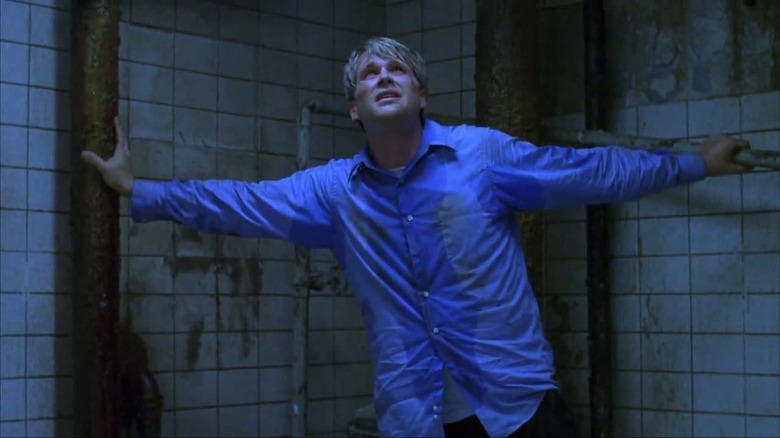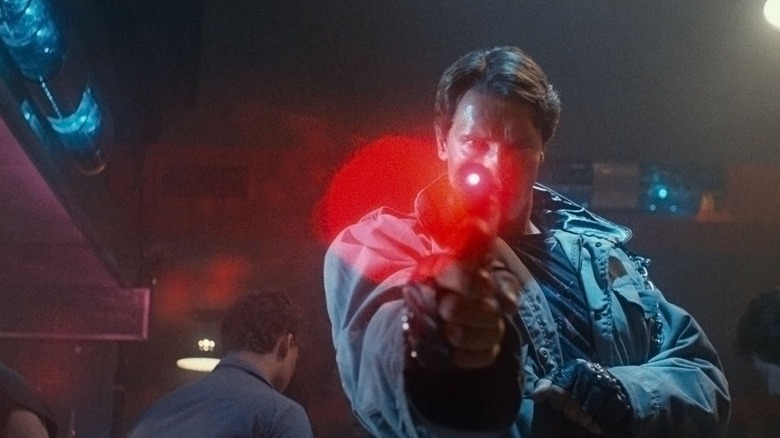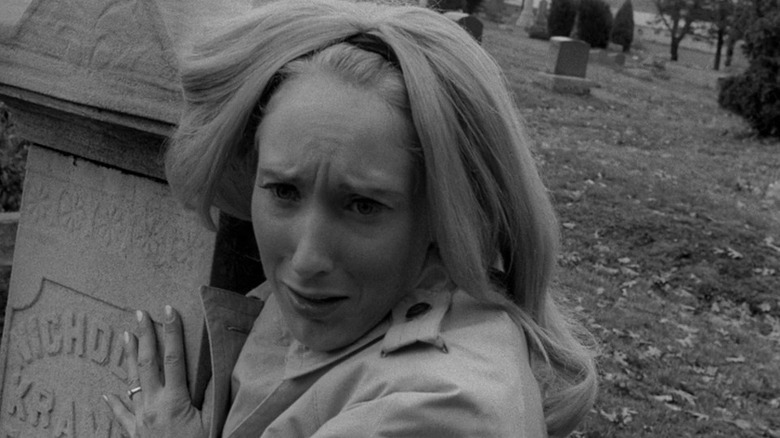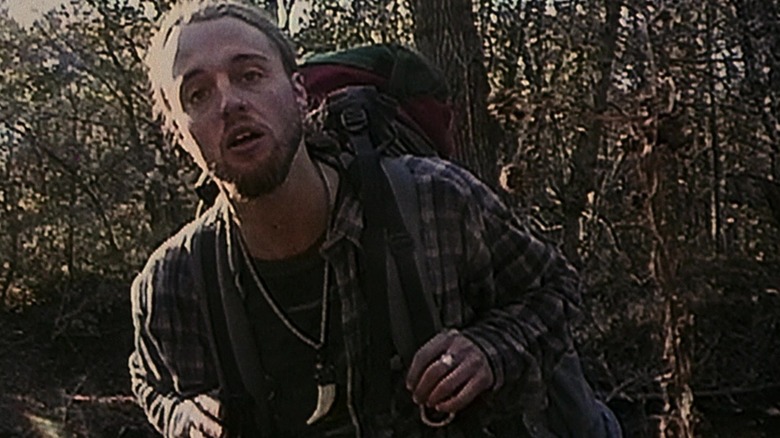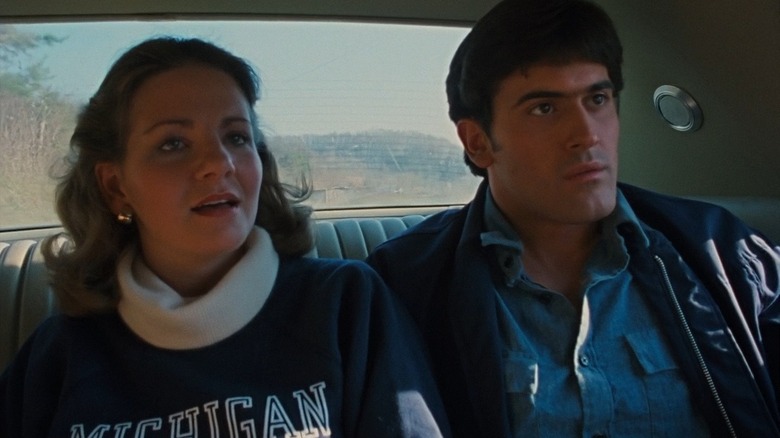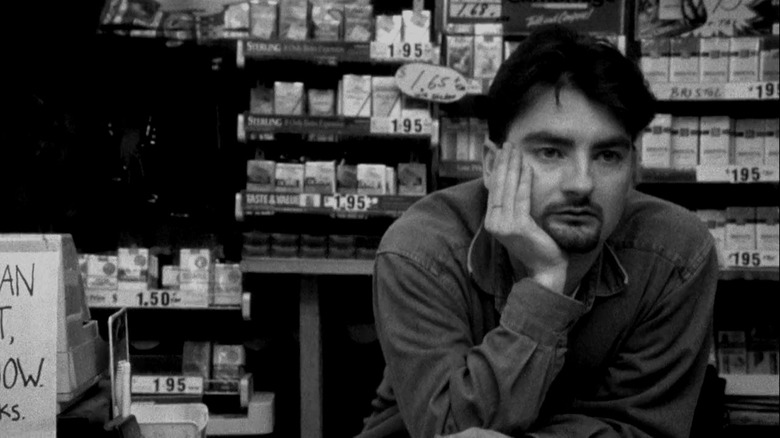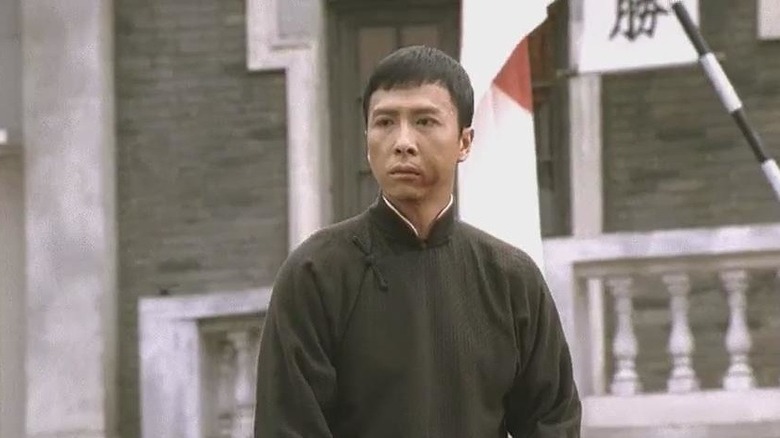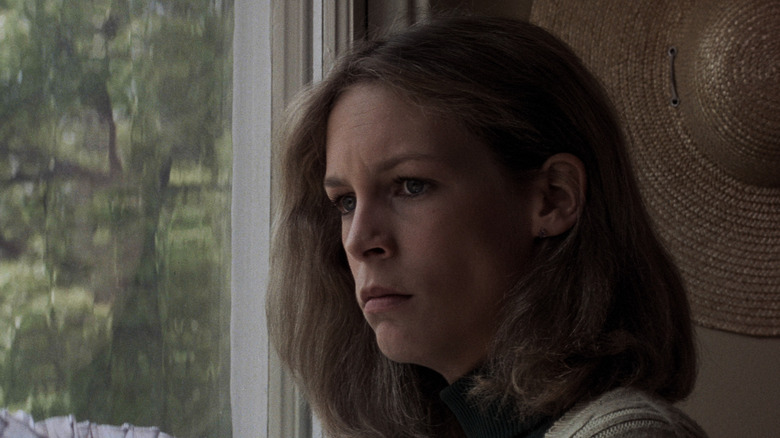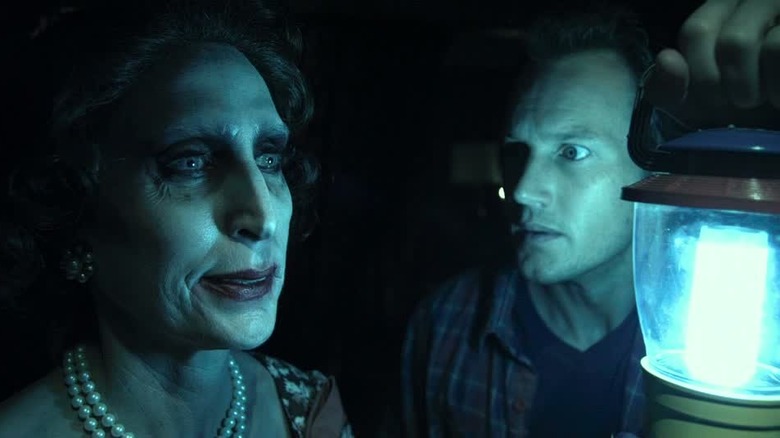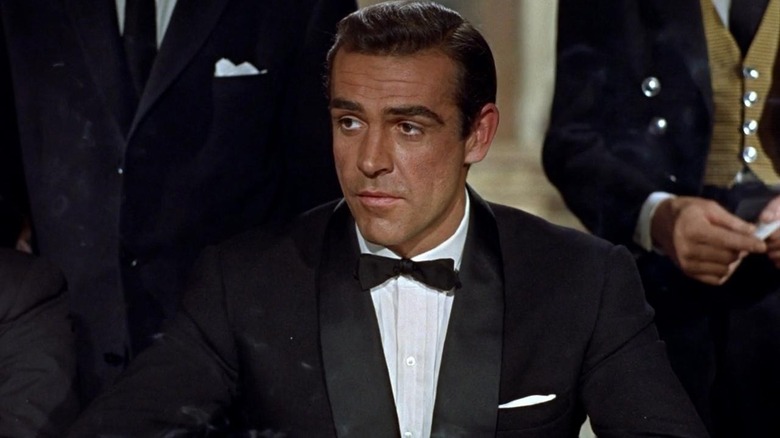Low-Budget Movies That Got Massive Budgets For Their Sequels
In the entertainment industry, low-budget independent movies are often seen as the underdogs, going up against the big studio films with their gigantic budgets and their millions of marketing dollars. A little indie film finding major financial success is always a real triumph, and sometimes that leads to a significant expansion as a franchise is born.
Once in a while, a low-budget underdog can become a big-budget juggernaut later on in the series. Having a larger budget to work with can lead to a sequel being bigger and better than the original, but huge budgets are not without their own drawbacks — in addition to all of the normal pitfalls that plague sequels. The creatives who may have had sole control over the low-budget originals might find themselves with less power once more money is being coughed up by the people in charge. Bigger is not always better in the world of cinema, and the results of a budgetary expansion can vary greatly from case to case. Here are some examples of low-cost films whose budgets ballooned for their sequels.
John Wick
These days, the "John Wick" series is frequently hailed as the gold standard of modern action cinema. However, when the first movie was released back in 2014, its fate was far from being a done deal. Made for a budget of around $20 million, the original "John Wick" was a gamble. The project was turned down by multiple studios, the original script was sold for next to nothing, and the film didn't have distribution in place even as late in the game as the end of post-production.
Without a major marketing push behind it, the first "John Wick" movie performed moderately at the box office. Luckily, strong word-of-mouth led to an exceptional post-theatrical cycle where the film proved to be far more lucrative on home video and streaming. The budgets for "John Wick: Chapter 2" and "John Wick: Chapter 3 – Parabellum" doubled, with both costing around $40 million. However, both were eclipsed by the gargantuan "John Wick: Chapter 4," which had a production budget of $100 million — not counting the drastically increased marketing budget. Even with the inflated cost, "Chapter 4" was still a massive financial win. Though it could have marked the conclusion of the series, there is more "John Wick" on the way with a spin-off, a TV adaptation, and even another mainline series entry all confirmed.
Saw
Before it was a sprawling horror franchise, "Saw" started in 2003 as a no-budget short film that was under 10 minutes long. The short proved to be an effective proof-of-concept and led to the feature-length expansion one year later. Made for a low budget of just $1.2 million, "Saw" broke through at the box office in a major way and spawned a long line of sequels and spinoffs.
The budgets quickly began climbing with each successive film, seemingly peaking with the $17 million "Saw 3D" in 2010 — the seventh entry in the series. Though the movie was still financially successful — if critically throttled — the series went dormant for the next several years. When the franchise did return seven years later with "Jigsaw," the budget was scaled back to $10 million, but even that major budgetary reduction was still several times larger than the original film's budget. The cost climbed higher than ever before four years later with the spinoff "Spiral: From the Book of Saw," which had a production budget of $20 million. Despite having the largest budget of the franchise, "Spiral" was the lowest-grossing film in the series by far.
The Terminator
1984's "The Terminator" ran the risk of blending into the sea of low-budget sci-fi action movies that were flooding the market at the time. However, with a smart script, a great cast, and slick direction from James Cameron, "The Terminator" was able to stand out from the pack and become an enduring genre-spanning classic.
For a young director in his early 20s with only $6.4 million (around $18 million when adjusted for inflation) to work with, James Cameron was extremely ambitious with "The Terminator." Showcasing a post-apocalyptic future, numerous types of special effects including advanced stop-motion, and huge action sequences, "The Terminator" really stretched its small budget to the limit. There have been many "Terminator" sequels in the years since of wildly varying levels of quality.
Every sequel was made for a budget of at least $100 million – with most clocking in significantly higher — dwarfing the original film many times over. The most expensive sequel was "Terminator Salvation," which came with a hefty $200 million price tag. The latest outing in the series, "Terminator Dark Fate," was made for an eye-watering $185 million, and although it turned a profit it was the lowest-grossing entry since the original.
Night of the Living Dead
"Night of the Living Dead" was a low-budget miracle that effectively gave birth to the entire zombie genre as we know it today, and kickstarted the career of horror master George A. Romero. This black and white classic was made for the tiny sum of just $114,000, which is still shy of $1 million even after adjusting for inflation.
Due to an unfortunate mistake, the film was never properly copyrighted, and thus "Night of the Living Dead" entered the public domain. This meant that Romero never saw much of the financial potential of the hit film, but he was able to get his due portion for the various sequels. Romero never worked with a budget as low as "Night of the Living Dead" again, but he was no stranger to working with small budgets. "Dawn of the Dead" and "Day of the Dead" were made on shoestring budgets as well, but when he returned to the series many years later for "Land of the Dead" in 2005, the budget soared to new heights. Made for just under $19 million, "Land of the Dead" became and remained the highest-budgeted film of the series as the budgets shrunk back down for the later "Diary of the Dead" and "Survival of the Dead." While $19 million is still far off from being a major studio blockbuster budget, it was a whopping 116 times larger than the budget of "Night of the Living Dead."
The Blair Witch Project
Made for a tiny budget but raking in huge results at the box office, "The Blair Witch Project" is one of the most profitable films ever made. The film might not have truly been the first found footage movie — as it is sometimes erroneously labeled — but it certainly did popularize the subgenre and spawn a wave of copycats and imitators. Because the novelty of the found footage style was so fresh, and through clever marketing tactics, "The Blair Witch Project" presented itself as genuine footage of a terrifying true story. Many viewers believed the film to be a non-fiction documentation of real events, which made everything more frightening and contributed to the film's massive financial success of nearly $250 million at the worldwide box office.
Though the total cost rose significantly higher after the film's elaborate and expensive marketing campaign, "The Blair Witch Project" was originally shot for just $35,000. After such a huge box office win, they wasted no time getting a sequel made. "Book of Shadows: Blair Witch 2" hit theaters just one year later but completely failed to recapture the magic. Abandoning the found-footage style and instead embracing a more traditional narrative, the sequel was obliterated by critics. For the sequel, the production budget jumped all the way from $35,000 to $15 million. The 2016 reboot "Blair Witch" returned to the found-footage style but kept the budget high at $10 million.
The Evil Dead
Sam Raimi's "The Evil Dead" turned a tiny budget into a cult classic and birthed a franchise that remains ongoing to this day. The canon of the franchise actually begins with an ultra-low-budget proof-of-concept short film titled "Within the Woods," which Raimi made for the pittance of $1,600. For "The Evil Dead," the budget rose to $375,000, which wasn't really enough to pull off the film's cavalcade of gory special-effects sequences. The film was a grueling ordeal to make, but all of the hard work paid off.
For the first sequel, "Evil Dead II," the budget grew to $3.5 million, then ballooned considerably higher for the next sequel, "Army of Darkness." As the first to be produced as a full-blooded studio film for Universal Pictures, "Army of Darkness" was a far more commercial endeavor and had a budget of $11 million to work with. The series went quiet for many years until returning with the remake/reboot in 2013, which had a budget of $17 million. The latest outing in the franchise, "Evil Dead Rise" saw the budget continue to rise even higher to about $20 million. With "Evil Dead Rise" proving successful, the franchise is expected to continue, and the budgets may continue to climb as well.
Clerks
"Clerks" is one of the most enduring indie success stories. The film was the directorial debut of Kevin Smith, who financed the film in part by pulling the risky maneuver of maxing out a dozen credit cards to scrape together exactly $27,575. The scrappy independent comedy was eventually sold to Miramax who dumped considerably more money into marketing the film than Smith spent making it.
Smith was able to springboard into a long and mostly-successful filmmaking career off of his low-budget debut. He has periodically returned to the characters and world of his debut throughout his filmography, most directly in "Clerks II" and "Clerks III," which saw the budgets climb to $5 million and $7 million respectively. Both were made for relatively low budgets, but compared to the originator, the sequels cost significantly more. Still, neither holds a candle to the $22 million budget of "Jay and Silent Bob Strike Back," which turned the memorable buddy duo of side characters from "Clerks" into the main characters. This spin-off sequel supercharged Smith's original credit-card-funded budget almost 800 times over.
Ip Man
Donnie Yen had been making excellent martial arts movies for many years by the time he starred as the character that he is best known for today: Ip Man, the real-life wing chun master who famously taught Bruce Lee. Before making "Ip Man," Yen had already worked with director Wilson Yip on the movies "Kill Zone," "Dragon Tiger Gate," and "Flash Point," all of which were successful enough but didn't have anywhere near the international breakthrough power of their fourth collaboration.
The first "Ip Man" movie was made for a budget of $11.7 million, but the budgets rose higher and higher for each of the mainline sequels starring Yen — not counting the numerous spinoffs and other films based on the same real-life figure. The highest-budgeted film was the conclusive chapter released in 2019, "Ip Man 4: The Finale." With the fervor and fandom around the character at its peak, the film landed a budget of $52 million, which is practically unheard of in the kung fu genre.
Halloween
Although it wasn't his debut feature film, 1978's "Halloween" was the film that put John Carpenter on the map as an eternal master of the horror genre. Carpenter made this timeless slasher classic for a tiny budget of $325,000, which would still only be about $1.5 million today when adjusted for inflation. The film smartly relies on intrigue and suspense far more than spectacle or special effects. "Halloween" succeeds largely on what goes unseen rather than what it showcased in explicit detail — which of course helps keep the budget low.
Flash-forward a few decades and the slasher genre that "Halloween" helped popularize is still around, and so is a modern spin on the ongoing franchise. The long and winding line of direct sequels were all made for varying budget sizes and resulted in vastly different levels of quality and box office success. When Rob Zombie directed a remake of "Halloween" in 2007 and a sequel to his remake two years later, both were made for $15 million each, a huge leap from the micro-budget days of the originator. When David Gordon Green wiped the slate clean and followed up Carpenter's classic directly with his modern trilogy, the budgets were again much higher than the 1978 original. The 2018 "Halloween" had a budget of $10 million, which was then doubled to $20 million for both "Halloween Kills" and "Halloween Ends."
The Texas Chain Saw Massacre
1974's "The Texas Chain Saw Massacre" has a much-deserved reputation as one of the scariest films ever made. Unfortunately, the numerous sequels, remakes, and reboots haven't come anywhere near the bar of quality set by the original. Tobe Hooper's direct sequel released in 1986 was more of a spoof of the original than a genuine follow-up, and the rest of the entries in the convoluted franchise have all been pretty disposable. This series as a whole offers a perfect example of how more money does not automatically equate to a better film.
"The Texas Chain Saw Massacre" was made for a measly budget of only $140,000, which is around $850,000 after adjusting for inflation. The shoot was an extremely challenging and debilitating 32-day production plagued by intense heat and a total lack of basic resources, but Hooper was able to spin the restrictions and drawbacks to the film's benefit. Unfortunately the same could not be said for the other entries in the franchise. Hooper was given a budget almost 36 times larger by Cannon Films for the only sequel he directed, but the budgets continued growing over the years. The financial zenith of the franchise arrived in 2013 with the abysmal "Texas Chainsaw 3D" which had a budget of $20 million. The 2022 Netflix requel was also made for a $20 million budget.
Alien
Ridley Scott made one of the best sci-fi films and one of the best horror films ever with 1979's "Alien." This multi-genre-defining classic was made for a reasonable budget of just under $11 million. The series continued over the decades, changing hands from Scott to James Cameron before passing on to other filmmakers like David Fincher and Jean-Pierre Jeunet. Scott wouldn't return to the franchise until many years later with the surprise prequel "Prometheus."
Scott's return to the franchise saw the budget he was working with skyrocket from $11 million to $125 million, putting it on the scale of other major studio blockbusters. The increased budgetary gamble paid off in this instance as "Prometheus" was still a massive box office success, raking in over $400 million at the worldwide box office. His next entry in the franchise, "Alien: Covenant," saw the scale reduced slightly with a $97 million budget – still leagues ahead of the originator's budget.
Insidious
James Wan, the director of the original "Saw", replicated the results of his breakout hit when he took the box office by storm with "Insidious." Produced by Blumhouse — who finance many low-budget horror films — "Insidious" was made for just $1.5 million but turned a profit of almost $100 million globally, a total that increased further after an extremely successful physical media push.
What could have been a self-contained horror film was quickly blown up into a full-blooded franchise instead. The budget for the first "Insidious" sequel remained on the smaller side, but by the time "Insidious: Chapter 3" hit theaters, the budget had grown to $10 million. "Insidious: The Last Key" was again made for a $10 million budget, but "Insidious: The Red Door" had the largest budget of the bunch with a $16 million price tag. Even with the budgets climbing higher, the "Insidious" franchise has remained extremely lucrative, with "The Red Door" bringing in almost $160 million worldwide.
Dr. No
The iconic "James Bond" series has been part of cinema history for six decades. In the modern phase of the franchise, it can be assumed that each outing will have a gargantuan budget and end up as one of the highest-grossing films of any given year, but the origins of the series weren't quite so lavish. The first Bond film was "Dr. No," released in 1962. Far from being the sure-fire bet that it is today, Bond's debut outing was only budgeted at $1 million, which would be about $10 million today after adjusting for inflation.
As the series grew in popularity, the budgets began to grow exponentially. The latest entry in the long-running series, "No Time to Die," became the most expensive to date by quite some margin. The initial production cycle already clocked in at a whopping $250 million, but the budget was inflated much further due to the extensive reshoots and delays caused by the COVID-19 pandemic. This also led to multiple rounds of promotions, pumping up the film's already massive marketing budget to practically incalculable heights. At face value, "No Time to Die" seemed like a financial success as it brought in well over $700 million at the worldwide box office, but when the costs of the film were tallied up, it turned out the film needed to reach $900 million at the box office just to break even.
